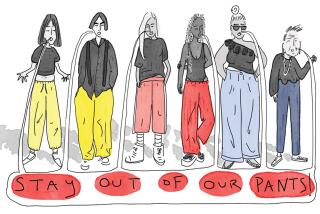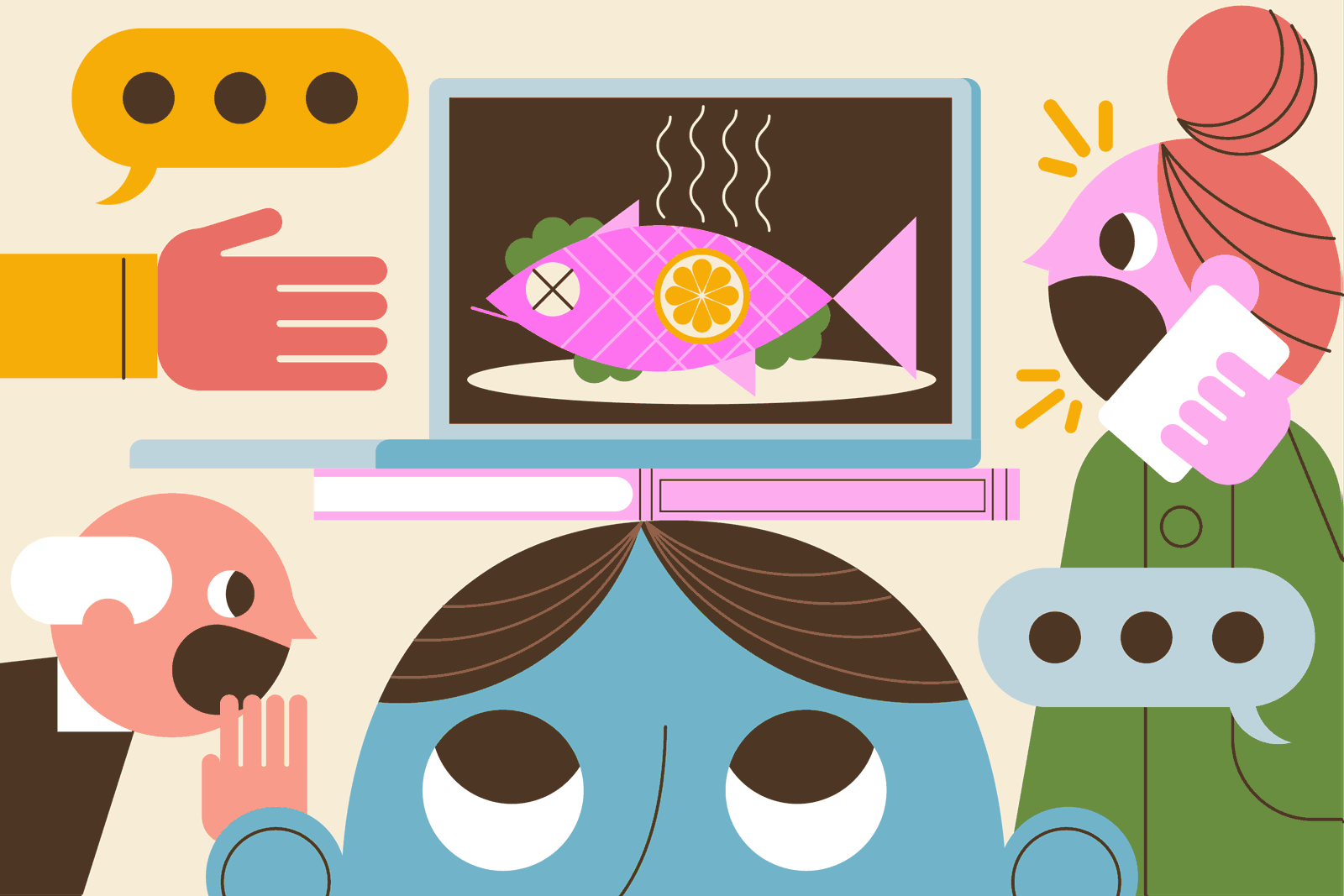Easy Does It
Dressing for a man, Cosmo-style, is easy to figure out, but brutal for a woman to endure: plump up the bust, pump up the derriere, show the leg, flex the calf, never mind what Paris, Milan or Soho say about the seasonal trends.
Men, of course, have long maintained that women fuss over their appearance mostly to amuse each other, yet the de facto dress codes in female-only workplaces suggest otherwise. Indeed, in a recent series of visits to offices populated solely by women, no evidence of killer heels or Wonderbras turned up.
Theory: When the air is testosterone-free, women’s clothes get baggy and stretchy. Crisp tailoring gives way to smocky tops and dresses most kindly described as “easy.” Snub-toed Mary Janes with cleated soles or Keds laced over girlish white socks replace the power pump.
Jennifer Drake, a grant writer for a Westside nonprofit, believes that office gender does influence dress. But she’s not sure it’s a good thing. Indeed, she describes her wardrobe as “too frumpy.” Before moving to Los Angeles a year ago, she worked at the male-dominated Arkansas Judicial Discipline Commission--and adjusted her morning routine accordingly.
“About 98% of the judges and almost all the attorneys I worked with were men, and when I was around them I cared more about how I looked for two reasons. First, I wanted to be taken seriously, not dismissed as the sweet little secretary. The other reason was, well, being around all those male lawyers! I wore straight skirts and paid a lot more attention to my hair and makeup. It took me twice as long to get ready as it does now.”
Although she now enjoys wearing flowing dresses and flat shoes, she admits, “I kind of miss the dynamic. I enjoy flirting. It’s fun to dress up for it. Without it, it’s really easy to slack off.”
But Karen Safer, studio manager for a Venice design firm owned and staffed by women, relishes her life without hosiery.
“Wearing nylons used to make me physically ill,” she says, lamenting the dress code at a former job, where she worked among mostly male architects. “I’d get these weird headaches and feel stressed. Men want women to wear nylons, but I just don’t think it’s healthy to have that nylon next to your skin all day.”
Safer now relies on a uniform of black leggings and vests. “Most of our service people are men. And sometimes I do go out of my way to look a little cuter if I know so-and-so will be in the office that day,” she says.
Suzanne Wickham-Beaird, West Coast publicity director for Random House, has worked exclusively with women for nearly two decades. “At our office, the dress code is just to dress,” she says. “I have to say, I’m much more of a slob than I ever was when I worked around men. My all-time low was the day I wore my crappy thong beach sandals to the office.”
Tammy Richards, a senior publicist in the same office, says she dresses a bit more formally than many of her 14 female co-workers. “It might be because I’m from Texas,” Richards says, “but I feel nice when I’m dressed nicely. I came to work in sweats and sneakers when I sprained my ankle, and I really hid out from people. I didn’t want to be seen.”
A man was recently hired in the publisher’s Santa Monica branch, the first in 20 years. On this planet of women, his presence was barely noticed. “Well, out of respect, I have stopped sitting with my legs up on my desk,” Wickham-Beaird says.
Promotions manager Pam Henstell, who wears jeans and a fresh white T-shirt accessorized with jewelry from Fred Segal’s Hoops most days, says, “We’ve pretty much assimilated him.”
That means he’s part of an atmosphere in which food is often a focus. Discussion of the shared midday meal begins around 11 a.m. with, “Has anybody thought about lunch?” The air is frequently perfumed with the tantalizing smell of microwave popcorn. And the afternoon coffee break is more of a fat-free frozen yogurt fest.
So, left to their own devices, it seems women, or at least these women, are more inclined to hunt for food than gather clothes designed to ensure the continuation of the species.






